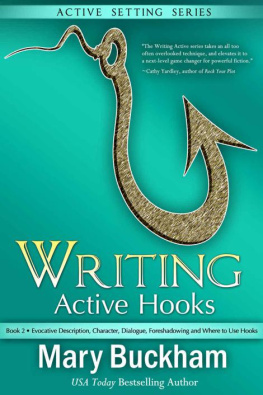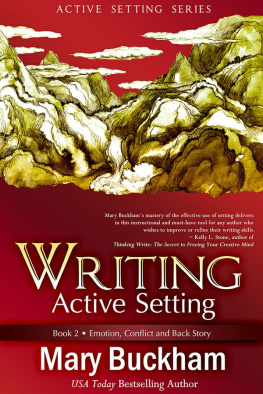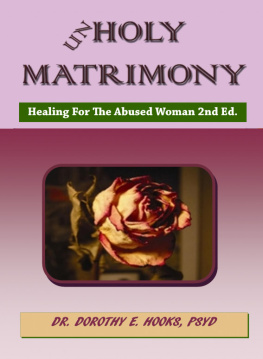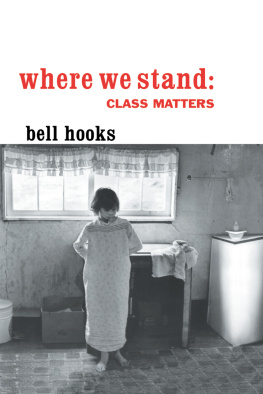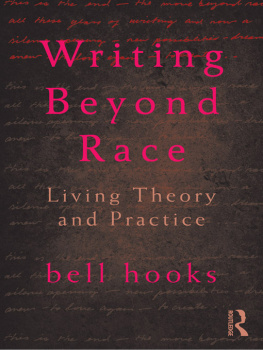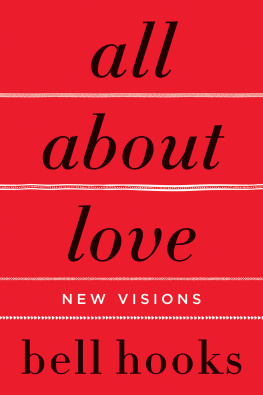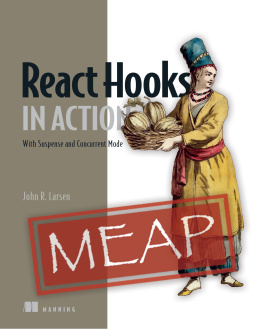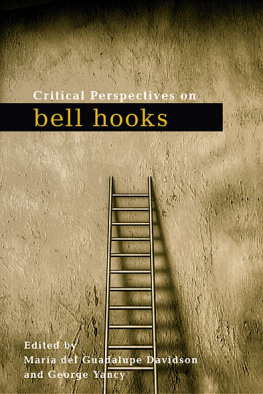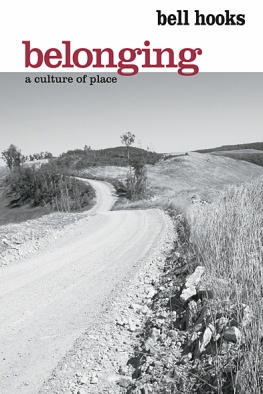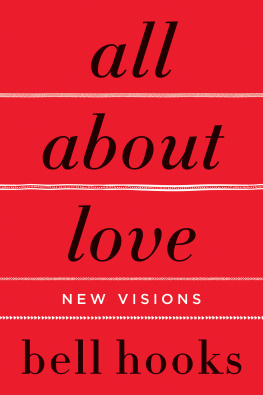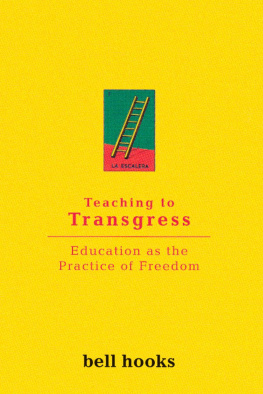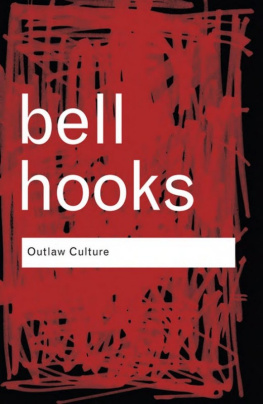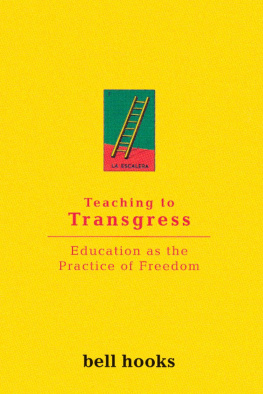Writing Active Hooks
Book 1: Action, Emotion, Surprise and More
Content copyright 2014 by Mary Arsenault Buckham
All rights reserved.
First Edition
No part of this book may be reproduced or utilized in any form or by any means, electronic or mechanical, including photocopying, recording, or by any information storage and retrieval system without permission in writing from the publisher.
Published by
Cantwell Publishing LLC
2675 Wilson Street
Port Townsend, WA 98368
USA
ISBN: 978-1-939210-24-1
Cover design by
THE KILLION GROUP, INC.
www.thekilliongroupinc.com
ACKNOWLEDGEMENTS
Writing any book does not happen in a vacuum, especially a how-to craft book. Id like to thank the hundreds and hundreds of writing students who helped define the assignments and the need to explore how to better use Hooks in our novels. Id also like to thank my early readers, all writers who gave invaluable feedback on the format and content of this book: Theresa Rogers, Dorothy Callahan, and Laurie G. Adams. Any of your great advice I did not take was my fault alone. Another huge round of thanks to my Street Team members who also act as early beta readers. I appreciate you more than you know.
A special shout out to Kimberly Killion and her able assistant, Jennifer Jakes, of HOT DAMN Designs, who really know how to design a killer cover and make the process painless, and to my husband, Jim, who makes all things possible in my world. Last, but not least, a huge thank you to my readers. Without you, Id have no craft to teach.
Thank you!
Table of Contents
Examples of Action or Danger Hooks
No Action/Danger Hook Examples
Assignments
Recap
Examples of Overpowering Emotion Hooks
No Overpowering Emotion Hook Examples
Assignments
Recap
Examples of Surprising Situation Hooks
No Surprising Situation Hook Examples
Assignments
Recap
Examples of the Totally Unexpected Hook
No Totally Unexpected Hook Examples
Assignments
Recap
Part 5* RAISING A QUESTION HOOK
Examples of Raising a Question Hooks
No Raising a Question Hook Examples
Assignments
Recap
Assignments
Recap
HOOKS
INTRODUCTION
Many writers have heard of hooks, and have heard we should use them in our manuscripts as a tool to engage readers and keep them engaged, but what were not told is how to identify what a hook isor where to use them to maximize them other than in that key opening line.
A hook is often used to explain a compelling premise or story idea, what the author brings to the table, and even the back cover blurb and cover art, not to mention plot twists and surprises in a story.
In this book, well be looking at five specific types of hooks on the page, in the body of your manuscript, which will keep the reader reading. There are more, but these are the most common, and the most universal, which means by understanding how to craft them, most readers will respond to them. Some will resonate more with you than others. Thats true with all readers, too. The important element to remember is to use hooks wisely and judiciously throughout your manuscript and to understand their intent.
Why? Because hooks help guide your reader deeper and deeper into your book. They are road signs that intentionally entice and direct them to turn the page and keep reading. Yes, its that simple. By strategically using hooks, you are giving your readers strong reasons to read just a little more.
The intention of the first line of your book is to get the second line read. The intention of the second line is to compel the reader to read until the end of the first paragraph. The intention of the first paragraph is to get the first page read. The intention of the end of the first page is to get your reader to turn the page and keep going.
But it doesnt stop there. The intention of the end of a chapter or scene is to compel the reader to keep reading, or at least begin the next scene or chapter where you thread in more hooks. The intention of the end of your book is to entice the reader to pick up the next book in the series or, if youre writing a standalone or single title book, to feel compelled to find more of your books or find out about you as an author.
You know a strong line has hooked you if you continue to turn the page when you had intended to stop. This is why hooks are used in key locationsto compel the reader to turn that page. Understanding how to do that in five very specific, very universal ways, will help you reach that goal.
The strongest hooks raise questions or reactions in a reader. A reaction, whether overt or reluctant, is subconsciously drawn, which makes the reader want to discover more. Its not the kind of question raised that will take the reader to the end of the book to discover the answers, though some may have elements of that included. No, its smaller increments of curiosity were raising with our word choices and strategic use of hooks. Were seeking the kinds of responses that pay off for both reader and author.
In this book, well touch on where to use hooks, but well focus mostly on the most important opening line hooks and defining examples of specific types of them.
Well examine the five hooks one by one to delve into what makes that particular hook work, even as you remember that hooks are mostly used in combination with other hooks. In the key places to use hooks, including that opening sentence and paragraph, we rarely trust ourselves to one hook only. Why? In case one hook does not resonate as strongly with a reader which is what an editor or agent is then an additional hook makes sure that your reader is engaged and remains engaged.
NOTE: Keep in mind: some hooks work better in some types of stories, whereas other hooks will not work as well.
One other issue to consider as we dig further into the next five hooks is being very aware of your intention and what your reader expects, given the type of book they are reading and you are writing. Using too many hooks in an opening for a story thats not meant to be fast paced, or too few hooks in a story thats meant to jump you into it at a breakneck speed, will cause you challenges. So be conscientious of what you are writing as you apply hooks.
Be prepared to experience a certain degree of awkwardness when you first start playing with hooks. Thats natural and to be expected. Sort of like when any instructor stops your process temporarily to adjust your mechanics. Initially, that may feel mechanical and unnatural, but eventually your writing process becomes more natural and your writing improves.
Dont worry if you didnt include hooks in your first or rough draft. Thats what the revision process is all aboutlooking for opportunities to strengthen your writing. Utilize hooks when the opportunity presents itself and youll go a long way toward accomplishing that goal .
HOOK 1: ACTION OR DANGER HOOKS:
Action is more than movement. Think James Bond action vs. a Jane Austen amble along the lane. Think strong verbs. Think of the type of movement that, were you to see it out of the corner of your eye, would snag and hold your attention. A person walkin g not so much. A person runnin g more so, unless you are in a situation where running is expected. A person running full stop, gasping for breath, creates the strongest hook possible because it is out of the ordinary; its what we as readers dont expect to see on a daily basis (unless youre a coach on a high school track team or are training for a sporting event).
NOTE: Think: At this point in your story, based on the action or danger you are showing, would the average reader have a question raised in their minds as to whats happening and why?
If you can answer yes to the above question, you most likely have an Action/Danger hook. If that answer focuses on strong action, not simply movement of a character on the page, then the hook applies. Think, too, of the action in the context of your story. Are you writing Womens Fiction? Then you might not find the Action/Danger hook used as often because these stories are not usually involving a lot of intense physical action or physical danger. Emotional danger, yes, but since thats often internal, its not as obvious to a passerby. Either that or the Overpowering Emotion hook applies, which well examine in a bit.
Next page

